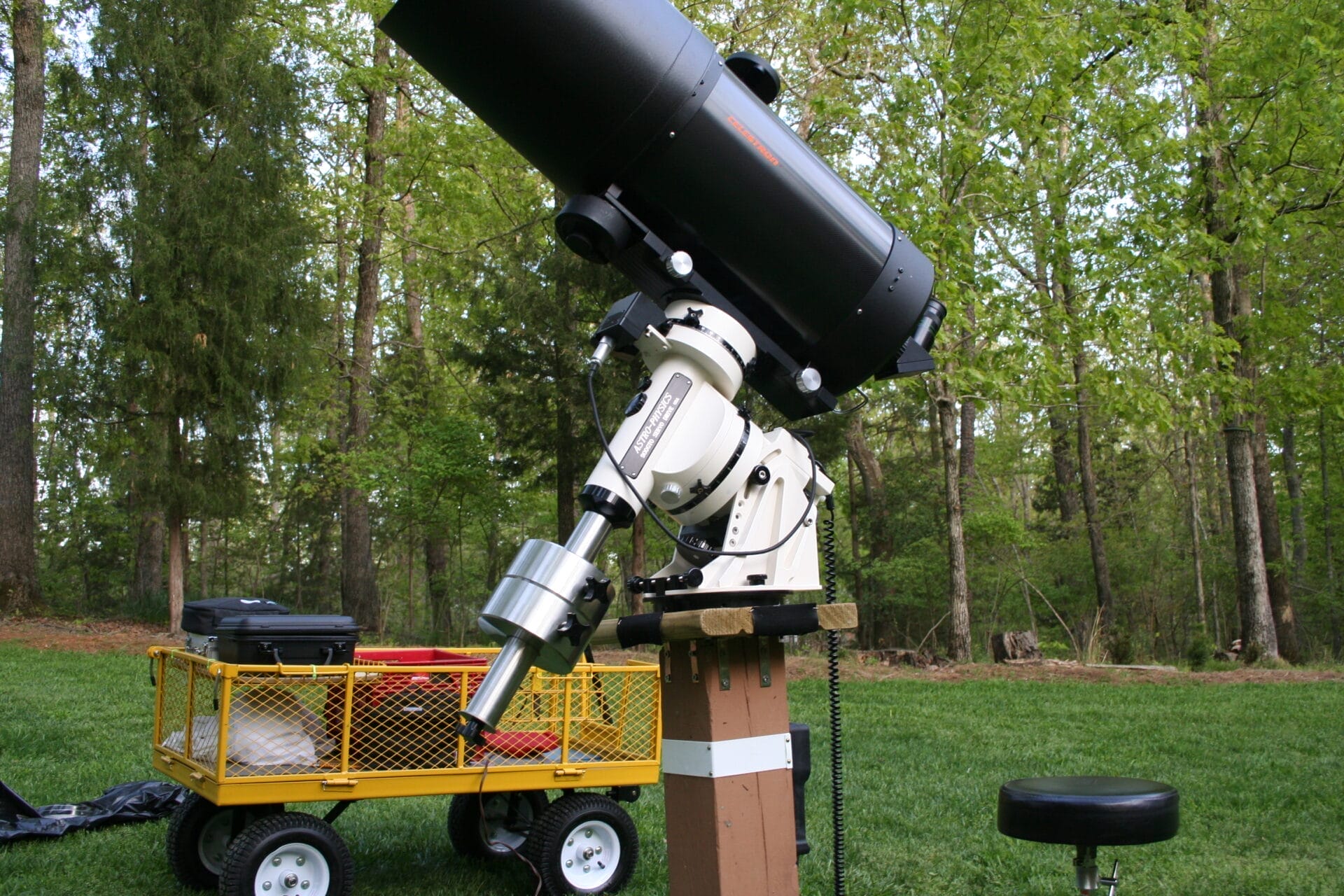The Best equatorial mount For DSLR Astrophotography
Astrophotography has experienced a surge in popularity across the globe, attracting both seasoned stargazers and photography enthusiasts who are captivated by the beauty of the night sky. A crucial piece of equipment in capturing the mesmerizing details of celestial objects is an equatorial mount, especially when it comes to using DSLR cameras. In this comprehensive guide, we’ll explore how this specialized type of mount enables the stunning long-exposure photography that defines the art of astrophotography. Whether you’re just starting your astronomical adventures or looking to upgrade your equipment, this post is your roadmap to selecting the ideal equatorial mount for your DSLR camera.
Table of Contents
The importance of Equatorial Mounts in DSLR Astrophotography
Equatorial mounts are designed to counteract the Earth’s rotation, presenting a geocentric view of the night sky. This design is critical in astrophotography, where prolonged exposures are necessary to capture distant targets in clear detail. Unlike the more familiar alt-azimuth mounts (used for terrestrial photography), equatorial mounts follow the path of celestial objects more accurately and with less distortion, which equates to clearer and crisper images.
The factors to consider when choosing an equatorial mount
When you’re in the market for an equatorial mount for your DSLR astrophotography, several key factors should influence your decision:
Weight Capacity
When selecting a mount for your DSLR camera and lens setup, it’s important to consider the weight capacity of the mount. This weight capacity determines the maximum weight that the mount can support, including any additional accessories such as guiding scopes or field flattener tools. It’s crucial to choose a mount that can bear the combined weight of all your equipment to ensure stability and smooth tracking. Exceeding the payload capacity limit can negatively impact tracking accuracy and observation quality.
Tracking Accuracy
Tracking accuracy of the mount is crucial whether you’re a professional astronomer or an amateur one as it determines how well the mount can follow the movements of celestial objects in the sky for brilliant photography. Check the mount periodic error (PE) and tracking accuracy factor. Some mounts come with an auto-guiding feature to improve tracking accuracy
Portability
When it comes to portability. If you plan to use the mount for various locations such as in a village, mountains, or deserts. Portability must be considered at that time. It’s beneficial for you to easily transport this anywhere. Some mounts come with smaller and more manageable pieces that will help you to quickly transport them. Consider the weight, size and ease of assembly while choosing an mount.
Power Requirements
Equatorial mounts rely on power for motorized operation. Consider whether you’ll have access to a power source and the battery life of the mount’s tracking system. You must consider the power requirements for your mount. How you’ll power it during observing. Some mounts can be powered by batteries while others may require an external power source. These mounts typically require a 12-volt DC power supply with a minimum amp rating to ensure reliable operation. Understanding the specific power requirements for your mount is crucial for superb performance and uninterrupted observing
GoTo functionality
Go-To-Mount auto-locates and tracks celestial objects. Automatically locating objects enhances the ease of use for beginners and also saves time for experienced observers. GoTo mounts offer advanced automation and precision for locating and tracking celestial objects, making them preferred for astrophotography due to their software control feature and compatibility with guide cameras.
Compatibility with DSLR Cameras
Ensure the mount you choose has the appropriate hardware and software compatibility with your specific DSLR camera model.
Top Picks and Reviews of Equatorial Mounts for DSLR Astrophotography
Now, let’s explore some top picks of equatorial mounts tailored for DSLR astrophotography, breaking down their standout features and user reviews. We will describe all types of mounts for beginner, intermediate to advance
PERFECT FOR BEGINNERS
Sky-Watcher Star Adventurer GTi: Entry Level Mount – Portable
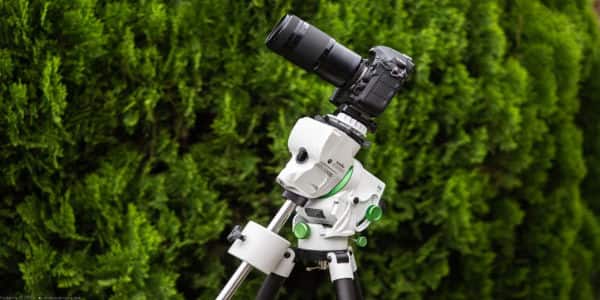
The Sky-Watcher Star Adventurer GTi is an excellent entry-level mount for beginners. It offers an impressive payload capacity, Wi-Fi control, and a built-in motor to handle heavy DSLR rigs, all in a portable package. While some users note the learning curve with Wi-Fi operation, the GTi earns praise for its value and performance.
Pros
- Lightweight
- Robust
- Go-to capability
- Easy to install
- Precise tracking
- Good polar alignment
Cons
- Backlash issue
- Missing tripod
Sky-Watcher EQM-35i: Versatile Mount for Beginners
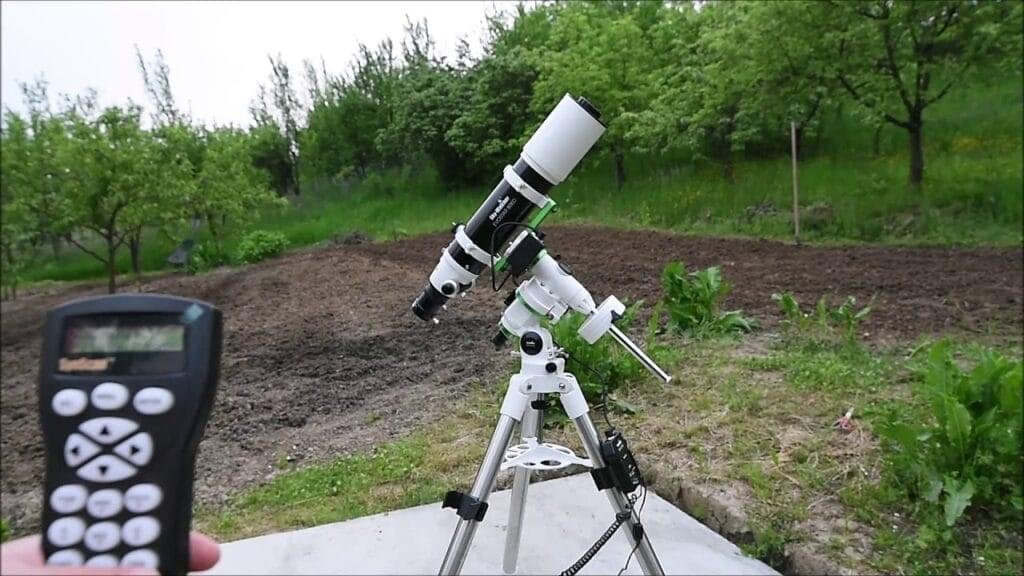
The Sky-Watcher EQM-35i is a mid-range mount that caters to both newbie and intermediate astrophotographers. Its notable features include a SynScan hand controller, precise tracking, and a robust build. Users appreciate its relatively simple setup and calibration process, although some suggest investing in additional counterweights for heavier setups.
Pros
- Stable mount for astrophotography
- Accurate tracking with GOTO system
- Solid build quality
- Easy to use once set up
- Affordable for the performance
- Fast delivery and good customer service
- Handles moderate payload well
- Good performance with DSLR or telescope
Cons
- Complex setup and alignment process
- Polar alignment can be challenging
- Issues with electronics and firmware
- Bulkier than some alternatives
Celestron Advanced VX Computerized Mount 91519: Precision for Astrophotography
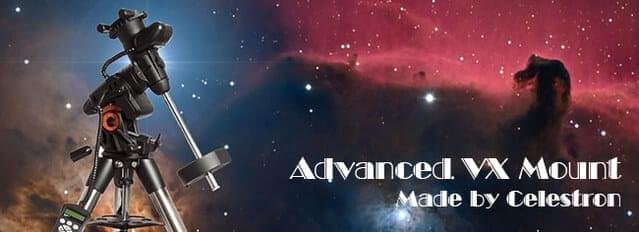
Celestron’s Advanced VX 91519 is a favorite among beginners and offers a balanced combination of performance and price. With photo-accurate Go-To capabilities, NexStar+ hand control, and minimal periodic error, it’s user-friendly and can handle DSLRs with ease. Some users have reported minor issues with alignment consistency but find them to be easily rectifiable.
Pros
- Easy calibration process
- Sturdy construction
- Good tracking accuracy
- User-friendly design
- Quiet operation
- Threaded power cable
Cons
- DEC motor issues
- Portability challenges
- No handle grips
- AC adapter not included
BEST FOR INTERMEDIATE USER
iOptron CEM40: Advanced Precision
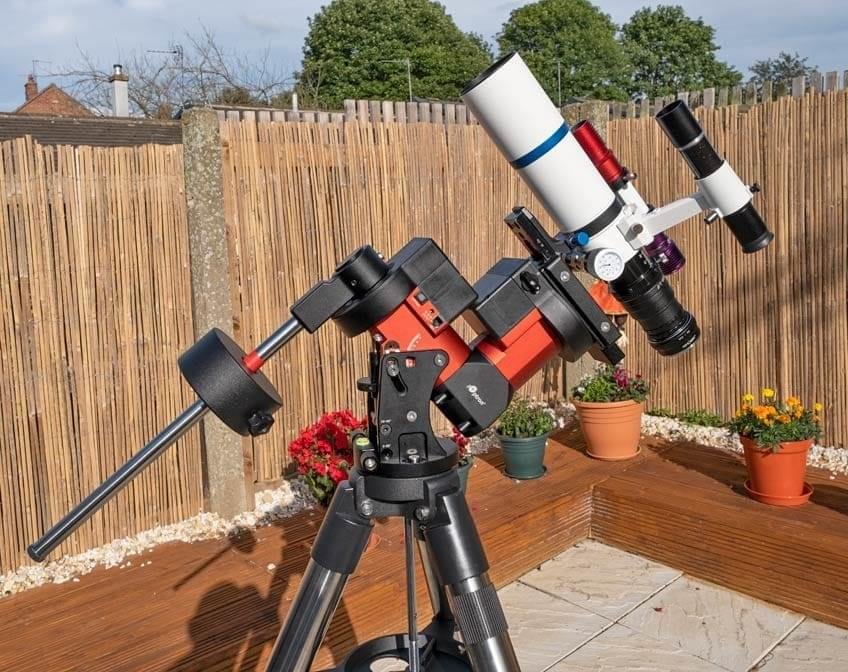
The iOptron CEM40 is a popular choice for astrophotographers moving beyond the beginner stage. This compact equatorial/alt-azimuth mount boasts an impressive payload capacity, Go2Nova hand controller, and a geared worm drive for accurate tracking. Users note the user-friendly software and the mount’s sturdiness, even under heavy loads.
Pros
- Well-built
- Good battery life
- Easy to use
- Portable
- Stable tracking
- Quality design
- Works with various cameras
- Decent load capacity
Cons
- Tedious alignment process
- Flimsy battery cover
- Requires stable tripod
- Delicate adjustments needed
- Issues with drive motor
Celestron Advanced VX Mount: Versatile Performance
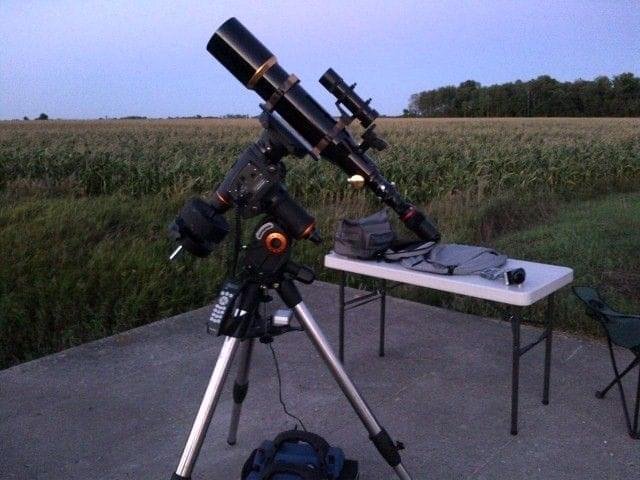
Another top contender from Celestron, the Advanced VX mount, strikes a balance between power and portability. Equipped with All-Star Polar Alignment, this mount is favored for its precise tracking and compatibility with a wide range of telescopes and cameras. The included hand controller is lauded for its versatility, allowing for easy navigation of the night sky.
Pros
- Easy calibration process
- Sturdy construction
- Good tracking accuracy
- User-friendly design
- Quiet operation
- Threaded power cable
Cons
- DEC motor issues
- No handle grips
- AC adapter not included
Sky-Watcher HEQ5 Pro SynScan Mount: Astrophotography Excellence
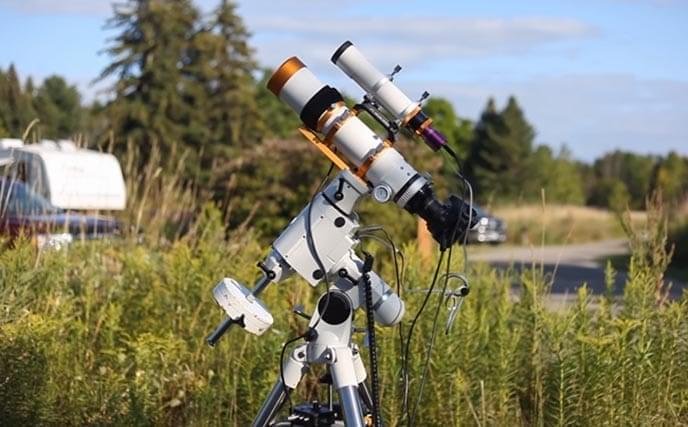
The Sky-Watcher HEQ5 Pro SynScan Mount is a step-up mount suitable for intermediate astrophotographers. Its sturdy build, along with advanced Go-To and guiding capabilities, makes it a solid choice for DSLR users looking for a long-term astrophotography solution. Users appreciate the detailed user manual and robust motor system for consistent tracking.
Pros
- Stable mount for astrophotography
- Good budget option
- Accurate tracking
- Solid build quality
- Large object database
- Easy to use once set up
- Strong and sturdy tripods
- Good performance with moderate payload
Cons
- Polar alignment challenges
- Complex setup process
- Electronics issues reported
BEST FOR PROFESSIONAL USER
Sky-Watcher EQ6-R Pro Mount: Precision Redefined
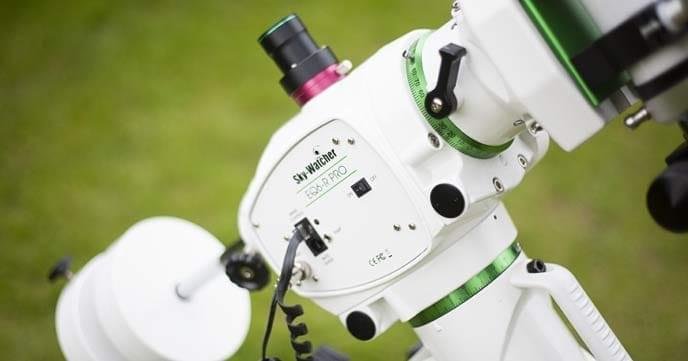
The EQ6-R Pro by Sky-Watcher is well-regarded for its high payload capacity, robust construction, and accurate Go-To functionality. It is a favorite among astrophotographers who demand precision and reliability in their mount. Despite its higher price point, users find the investment justifiable, particularly when paired with quality optics.
Pros
- Quality mount for astrophotography
- Good tracking accuracy
- Encoder for tracking adjustments
- High payload capacity
- Quiet and rock solid
- Separate USB connector
- Good documentation
- Smooth stable platform
Cons
- Stiction from thick grease
- Awkward alt-az screws for polar alignment
- LCD display freezing in cold temperatures
10Micron GM1000 HPS Mount: Unrivaled Accuracy
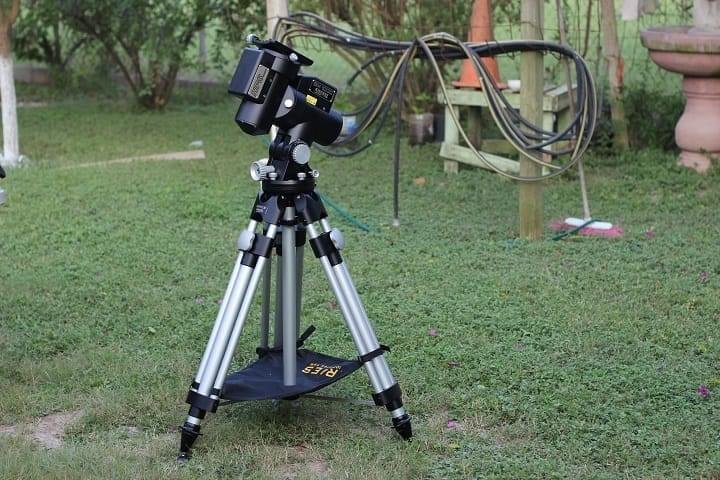
Engineered for the serious astrophotographer, the 10Micron GM1000 HPS Mount boasts high-precision gears and motors, exceptional tracking, and an absolute encoders system for unparalleled accuracy. While it is on the heavier side, this professional-grade mount is adored for its uncompromising performance and extensive features, ideal for capturing intricate deep-sky details with a DSLR camera.
Pros:
- High-precision gears and motors
- Exceptional tracking capabilities
- Absolute encoders system for unparalleled accuracy
- Uncompromising performance
- Ideal for capturing intricate deep-sky details with a DSLR camera
Cons:
- Heavier in weight
Celestron CGX-L Mount: Superior Performance
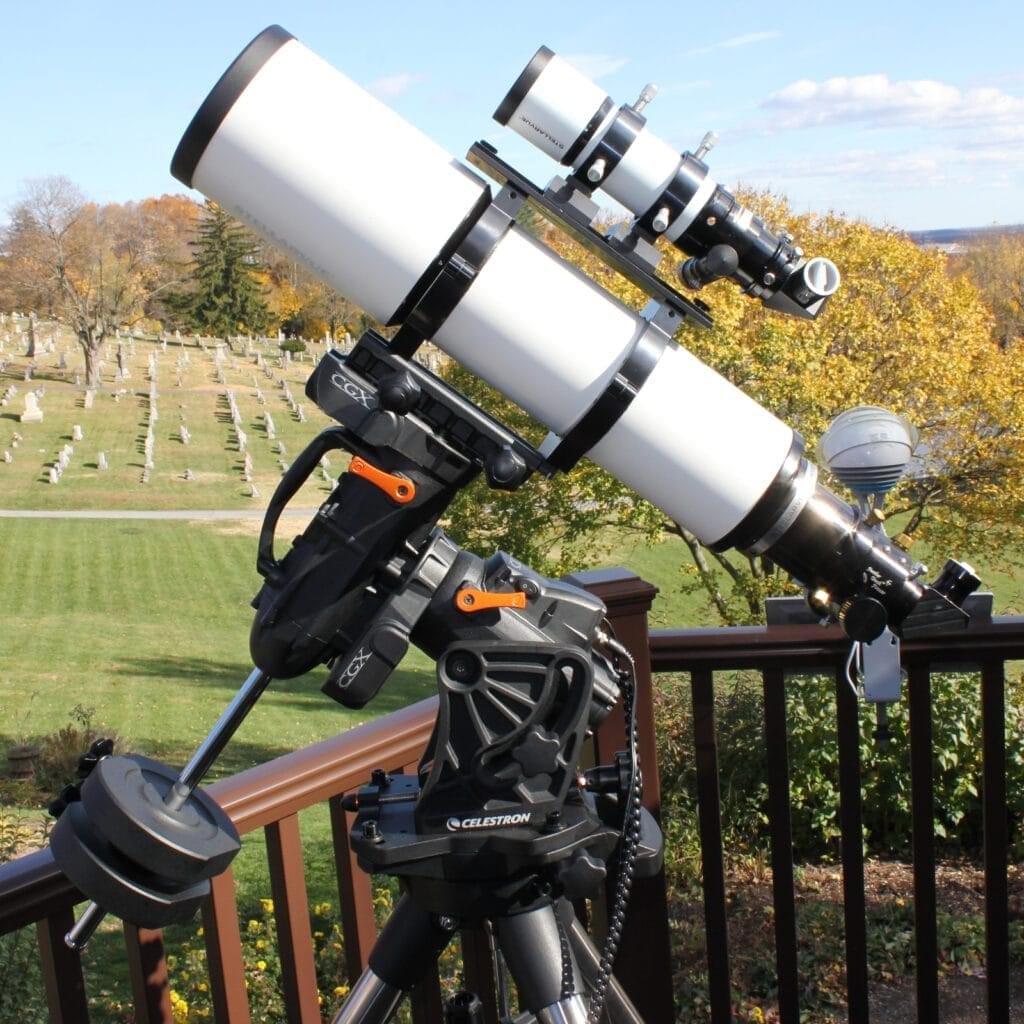
For advanced astrophotography, the Celestron CGX-L Mount offers top-of-the-line performance with a hefty payload capacity and precise tracking. Its general design and motor system make it stand out for those who require a mount that can handle the heaviest of telescope rigs. Users appreciate the mount’s inclusion of StarSense and SkyPortal software, which adds to the comprehensive tracking and aligning capabilities.
Pros
- Sturdy construction
- Accurate tracking
- Easy setup
Cons
- Heavy
- Expensive
User Tips and Recommendations
When navigating the world of equatorial mounts, it’s invaluable to learn from those who have gone before. Here are some user tips and recommendations:
Beginners’ Tips
- Start with a mount that is user-friendly and offers good support and online resources for learning the hobby.
- Consider the flexibility of the mount and whether it can grow with you as you acquire new equipment and skills.
Advanced Users’ Perspectives
- Focus on the accuracy and repeatability of the mount’s tracking, especially if you plan to take long-exposure shots.
- Take note of the mount’s firmware update frequency, as this can indicate ongoing support and improvement in its functionality.
Recommendations from experienced astrophotographers
Experienced astrophotographers often emphasize the importance of choosing the right equatorial mount to ensure successful sessions. They recommend prioritizing mounts that offer a combination of stability, precision, and longevity. A common piece of advice is to invest in a mount that slightly exceeds current needs to accommodate future upgrades in equipment without the need for a new mount. Additionally, opting for brands with a strong reputation for customer service and a robust community can provide invaluable support for troubleshooting and tips. In terms of specific models, while preferences can vary based on individual needs and budgets, the Sky-Watcher EQ6-R Pro and the 10Micron GM1000 HPS are frequently praised for their reliability and performance in various conditions.
Conclusion
With astrophotography, remember: the best camera is the one you have with you. Enhance its capabilities with an equatorial mount to capture the cosmos’ splendor. Consider the guide factors, compare top equatorial mounts, and make an informed choice.
In the night sky, every second matters. Choose the right equatorial mount for your DSLR to turn stargazing into wall-worthy art, inspiring others to gaze up. Which mount are you considering and why? Share your thoughts with fellow astrophotography enthusiasts as you explore space wonders through your lens.
FAQs
What is an equatorial mount, and why is it better for astrophotography?
An equatorial mount follows the Earth’s rotation. This helps you track stars smoothly and avoid blurry images during long exposures.
Can I use a DSLR with any equatorial mount?
Not all mounts fit every DSLR setup. You need one with the right payload capacity and a compatible mounting plate or adapter.
Do I need a GoTo system for DSLR astrophotography?
A GoTo system makes finding and tracking objects easier. It’s very helpful for beginners and for capturing faint deep-sky objects.
How important is polar alignment in equatorial mounts?
Polar alignment is crucial. It ensures your mount tracks the sky accurately and prevents star trails in your photos.
What features should I look for in the best equatorial mount for a DSLR?
Look for smooth tracking, low periodic error, good weight capacity, and built-in auto-guiding support for longer exposures.

